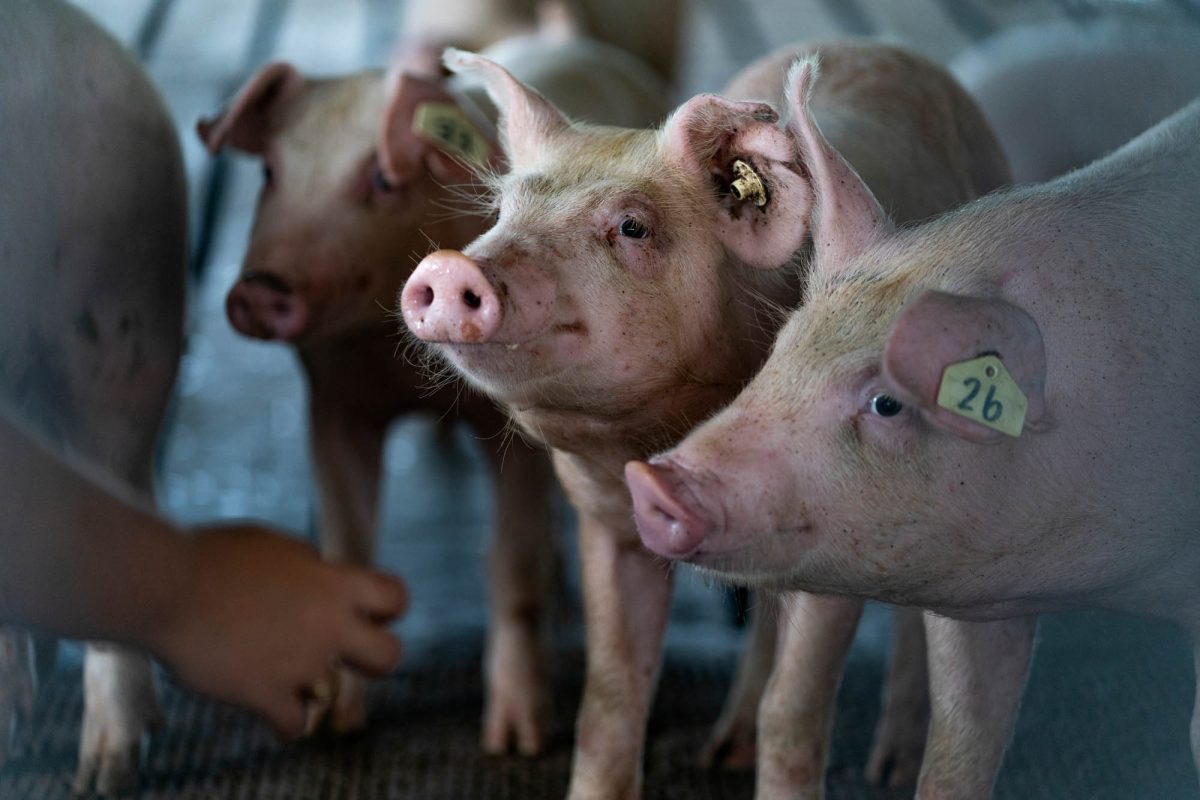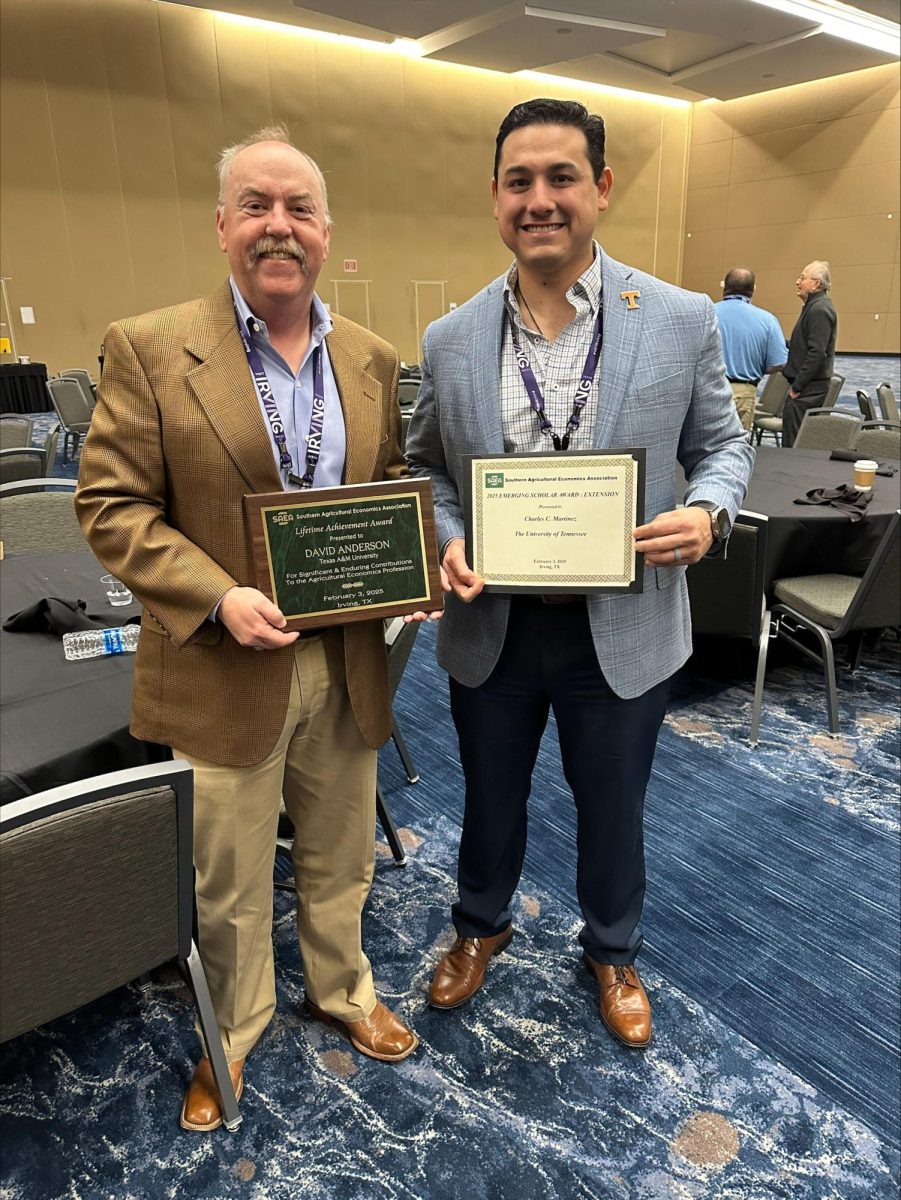In March, two biotechnology companies were given the greenlight by the Food and Drug Administration, or FDA, to conduct trials transplanting genetically-modified pig kidneys into human patients with chronic kidney disease. In the scientific community, the trials are highly anticipated, as success could mean supplying kidneys to thousands of patients on the national organ list.
Two companies, United Therapeutics and eGenesis, have been cleared to begin xenotransplantation, or the act of transferring organs from one species into another, using their own genetically-engineered pigs. According to the Health Resources and Services Administration, over 103,223 men, women and children are on the national transplant list. Seventeen of those people die each day waiting for a match.
“In my 30 years as a general surgeon, as a resident, I’ve watched people die,” Texas A&M clinical professor and director of MD Plus Programs Dr. Rob Carpenter said. “When you train as a physician, they tell you to be objective, but we care immensely and build relationships with our patients. I remember getting calls when a kidney match is finally available, only for it to arrive unusable. I’ve seen it happen over and over until the patient ultimately passes away. I can tell you, this opportunity to change people’s lives is beautiful, it’s priceless.”
The trials
According to the press release, United Therapeutics is expected to begin the trial in mid-2025 with six patients who have kidney failure. For the company’s unique UKidney to be transplanted successfully, eligible patients need to be between the ages of 55 and 70, diagnosed with kidney failure and on dialysis for at least six months prior to the trial.
The UKidney will originate from United Therapeutics’ new $98 million genetic engineering facility in Houston, which is being constructed to house the modified pigs and their kidneys for the trial.
“The reason why we are moving towards genetically-engineered pigs is to literally knock out genes that identify the organ as not human,” A&M associate professor of precision gene editing Karl Clark, Ph.D., said. “United Therapeutics has also knocked out a gene to prevent the organ from growing too big for the human body and inserted several human genes that help avoid an immune response.”
When a human receives a donated organ (human or pig), their immune system won’t recognize the tissue and will send white blood cells to destroy it. Patients take immunosuppressants for the rest of their lives after receiving a transplant to prevent an immune attack, which can increase risks of other infections and certain cancers. Genetically-engineered pigs could change that.
“Every moment that an organ for a renal transplant becomes available — which only occurs when someone dies and happens to be a match, in good health and an organ donor — the transport process reduces its longevity after being artificially sustained for hours,” Carpenter said. “Here, we have the ability to, in a planned manner and under controlled circumstances, take the most optimal means of a match and bring it directly from source to the recipient and save their life.”
Genetically-engineered pigs
Pig tissues are anatomically and genetically similar to humans’. The size of their organs matches our own, and their genetic makeup allows scientists to easily reshape cells that would be rejected by a human body.
“Xenotransplantation is generally not new,” A&M professor and swine extension specialist Jeffery Wiegert, Ph.D., said. “Porcine tissue has been the main source to replace human corneas, heart valves, insulin producing cells and to cover burn wounds. In 2022, the first successful pig heart transplant was done at the University of Maryland.”
Prior practices are models for success, Wiegert said. Genetically-engineered pig kidneys have an increased chance to be accepted by the human body because they lack cells that identify them as foreign.
One specific case has scientists hopeful that the FDA-approved trials will be successful. On Nov. 25, 2024, Towana Looney, 53, from Alabama received the third gene-edited pig kidney at NYU Langone. She was discharged from the hospital 11 days after surgery and is now the longest-living person with a pig kidney.
Carpenter defines success as the gift of life.
“The ability to decrease the number of people who die every single day waiting for a solid tissue organ is incredible,” Carpenter said. “And that’s been a long time coming.”
Ethical considerations
Members of the public and some ethicists are concerned about the ethical implications of genetically altering genomes and using pigs’ organs for human benefit. There are hesitations of using this kind of technology because humans are directly altering cells or “playing god.” Some also wonder if this technology will be used in the future on humans and whether these trials will be the catalyst for that development.
“As both a scientist and a farmer who raises animals, I can understand people’s concerns,” Carpenter said. “In my opinion, if we look at the pork industry, we take the lives of animals for the nutritional benefit of human beings. Genetically modifying pigs to give organs is a much more meaningful and positive utilization of that life. It provides us with the ability to meet an overwhelming need and reduce the suffering of thousands of people. But I also respect the right to a choice, like if someone chooses to not believe in genetic engineering for religious or personal beliefs.”
Another concern is the transmission of zoonotic diseases, or those that can be transferred from animals to humans, due to xenotransplantation. A&M bioethicist Bryn Esplin, JD, said it’s definitely a concern, but there will be safeguards in place.
“First, researchers must ensure that gene-edited pigs are bred and housed in designated, pathogen-free environments so as not to contract a microorganism that could be transferred to the patient,” Esplin said. “Ongoing biosurveillance of the patient and their close contacts is required.”
Many companies are already dabbling in gene editing for maintaining the livestock industry. PIC Genetics is currently developing pigs that are genetically resistant to porcine reproductive and respiratory syndrome, or PRRS, which caused a $1.2 million loss in the pork industry last year.
If the trials are successful and pig kidneys become widely available, Carpenter said he is most concerned about the lack of xenotransplantation for those affected by ethnic disparity.
“The people who are at the greatest risk of dying are oftentimes individuals who are from underserviced, under-resourced communities. The number of people that have renal failure who are African American or Hispanic is disproportionate to those who are Caucasian,” Carpenter said. “And yet, the number of people within those communities who are close genetic matches and are willing to give a kidney is lower because of many, many other issues in the healthcare system.”
According to the American Kidney Fund, the number of people who have kidney failure who are African American or Hispanic is disproportionate to those who are white. Recent research even suggests that genetic factors, such as variants in the APOL1 gene, could be the cause of increased kidney failure among African Americans.
“Oftentimes underrepresented individuals who live in remote areas, like rural Texas, don’t necessarily have a transplantation expert that’s close by,” Carpenter said. “They are often the last people to receive help. The beauty of genetic engineering technology is that we can marry other technologies, like AI, to improve the matching of genetically-engineered pig organs for those who lack financial stability or are in marginalized groups.”
Wiegert said that as an animal scientist, he does his best to take care of animals in an environment that is stress-free — but he won’t shy away from the fact that animals are used to improve people’s lives.
“The need for organs is not going away, and I don’t see it being addressed otherwise,” Wiegert said. “It is imperative that we continue to pursue science and help people live stronger lives. I think that genetically engineering pigs could solve the problem of organ shortage.”
















